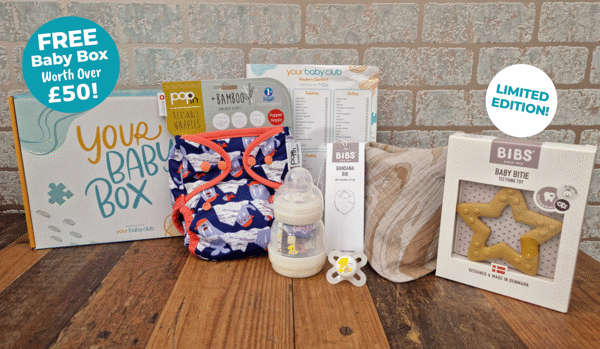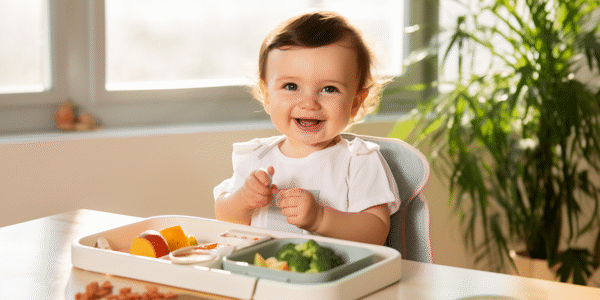Nowadays, most families are looking for ways to save money, especially when it comes to feeding a busy household... and if you have to consider weaning a baby after they reach the six-month milestone, the cost of it all can be a concern.
Weaning your little one on a budget needn’t be stressful, and whether you plan to do baby-led weaning or feeding your little one what you eat, these options below can sometimes be applied to both variables.
You may have time to do some cooking at home, or you may need to buy things and make quick meals in a simple way. Lots of these tips can be used in both situations, work out which is the most beneficial to your family and household dynamic. It’s also a good idea to work out your monthly spending and stick to your chosen budget when buying food.
While I was on maternity leave, I chose to do bulk cooking twice a week, and this freed up my time because I was only preparing leftovers or an accompaniment to a main meal that I had already cooked the protein for.
A good example of this is a chicken casserole with several vegetables, so I was then only cooking rice, potato or pasta to go with it. Weaning on a budget is about cooking smarter and with bargain ingredients if you can find them.
Homemade Food
The best thing about homemade meals is that they are cheaper to make, they contain less salt, and you know exactly what is in them because you prepared them from scratch.
You can choose to use simple ingredients if cooking is not your passion, and it can be adapted for anyone who may have allergies too. Always make meals members of your family enjoy so as to minimise waste and try baby on small amounts first of all.
A great example of a homemade meal is cottage pie. Simply boil and mash white potatoes adding in a spoonful of butter (or a dairy-free alternative). While the potato is cooking, fry a mince of your choice (beef, pork, lamb or a vegan alternative) with some diced onions.
Once cooked, add in diced vegetables of your choosing and place into an oven-proof casserole dish with a little water. Mix in a stock cube/pot/gravy granules to suit your taste. Add the mashed potato on the top and cook in the oven at 180’c for 30-40 minutes until the top of the potato is changing colour.
Bulk Cooking and Freezing
If you have a decent-sized freezer, you can portion up some food that you bulk cook and freeze some of it for the following week.
Leftovers also can be refrigerated for a day or two, depending on the recipe. Often things like casserole or bolognese can be frozen once a batch is cooked and cooled down.
Bolognese is a great starting point because it can also be used as a base for other meals, such as lasagne or chilli con carne.
To make chilli, simply defrost the bolognese overnight in your fridge, then pour it into a saucepan and add some chilli powder (mild for children), some tinned kidney beans, and chunks of carrots and cook on high heat until thoroughly reheated, serve it with rice or even mashed potato.
Meal Planning
I have always been a fan of making a meal plan after doing the weekly shop; this will help you to avoid wasting food due to the use by dates and keeping track of what you have bought too.
I would write down what needed to be used or cooked on what day and pin this to the outside of the fridge. Always write down the info you need so you don’t have to open the fridge, for example, chicken breasts - 454g use by Thursday.
Plus, you can always cook off two proteins at once in separate pans if they are going out of date the same day; it is better to cook them the day before their use-by date. After cooking, you can use one of them for tonight’s food and the next day and freeze the other. It is your choice whether you freeze the cooked meat with or without a sauce.
For example, Spanish chicken is delicious and simple to make. Fry off diced chicken until cooked; add in onions and sliced bell peppers and fry together until the chicken is lightly browned.
Add a tin of chopped tomatoes and start making your sauce. You will need garlic and paprika (these can be dried) and a tin of beans to bulk it out; haricot or butter beans work best. Cook it all on low heat, stirring occasionally, until all the flavours of the sauce have mixed together. Serve with anything you like, but we love it with mash, rice or roasted potatoes/wedges.
Help! Baby Refused To Eat What I Cooked!
Don’t panic! You can freeze the leftovers and try again
Some babies don’t like something on the first try and you can always freeze any leftover homemade baby meals to try again in a few weeks time. It can take a young child up to three separate attempts of trying something before they decide if they really like it or not.
Don’t be disheartened and try completely different foods in between, repeating those the child was unsure about. Make sure to offer individual foods as well as those mixed together to form a sauce.
Buying Frozen Vegetables and Frozen Fruits
Consider buying items in the freezer aisle, they can be cheaper in the long run, especially if you’re using them in bulk cooking, like diced vegetables ready to pour out and use.
And if you’re looking to make some fruit into homemade puree, it is definitely better value, too, things such as frozen mango are great. There are fruits like strawberries and raspberries which hold their shape better when kept fresh, which you may find simpler if you’re doing baby-led weaning.
Buying Seasonal and Special Offers
Buying seasonal to save money and looking out for supermarket special offers can help to build your meals around. If you plan to feed your baby the same food as you’re eating (except for anything with honey in as that isn’t allowed until the age of 12 months), then it’s advisable to stick to a shopping list when you do go out grocery shopping.
Babies can eat the majority of what you will have. Just make sure to dice things and cut things appropriately for your little one so as to avoid choking hazards. Most supermarkets now have weekly offers on selected fruit and veg, sometimes half price or even less. Try to incorporate these deals into your meal plan for the week to save money.
A big tip of mine is to check the deals online before going in-store so you already know what you’re after.
Reduced Stickers and Sections
Always check the reduced to clear section when you go shopping, sometimes you will find meat like mince or chicken breasts that can be portioned off and frozen for future meals.
Don’t be afraid to buy a larger pack than you need if it’s cheaper, and separate it into bags when you get home, just make sure to write on it raw and the meat you’ve chosen plus the date that you froze it.
Breastfeeding
If you’re breastfeeding a six-month-old, make sure to continue to do so, breastfeeding is recommended until the age of two years old, or for as long as you’re able to do so.
You will save money by not needing to buy formula-based milk products. Cow’s milk can be added to a child’s diet at the twelve months of age milestone, but breastfeeding will save you money and also give your baby the nutrients and minerals they require through your milk.
Baby Led Weaning
Baby-led weaning on a budget doesn’t have to be tricky, simply offer similar things to what you’re eating but arranged appropriately, such as carrot and cucumber cut into sticks, grapes, and other round fruit needs to be cut long ways and then into quarters to prevent the items being a choking hazard.
You don’t need to spend a fortune on items that you won’t eat yourself, just use the food stuffs that you’re already purchasing and offer them to your baby to try.
Another tip is if you feed little ones before yourself and they don’t want something; you could always incorporate it into your own meal to save any waste. Great baby-led weaning items include crackers, bread sticks, fruits and cooked vegetables, yoghurts, pieces of cooked pasta and pieces of meat that are cut up.
If you find your baby likes to be fed and sometimes feed themselves, then you can do a combination of both. I used to let my son eat his lunch by himself, but I used to help him to eat the evening meal, which was often the family meal and with a spoon.
Hopefully, you have found lots of these tips useful and I hope you can implement them in the coming months as you reach the weaning stage.







